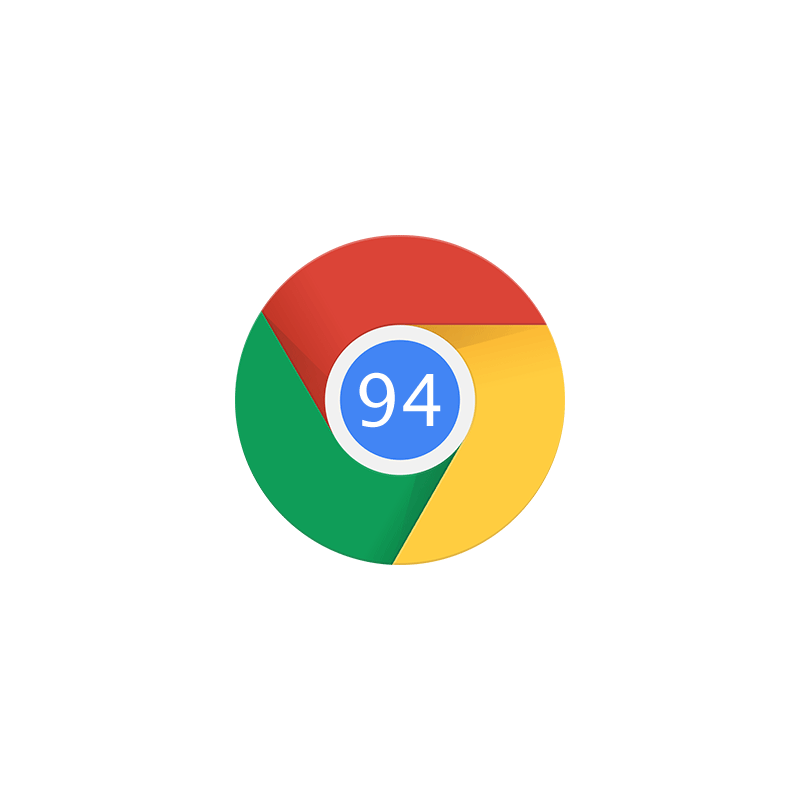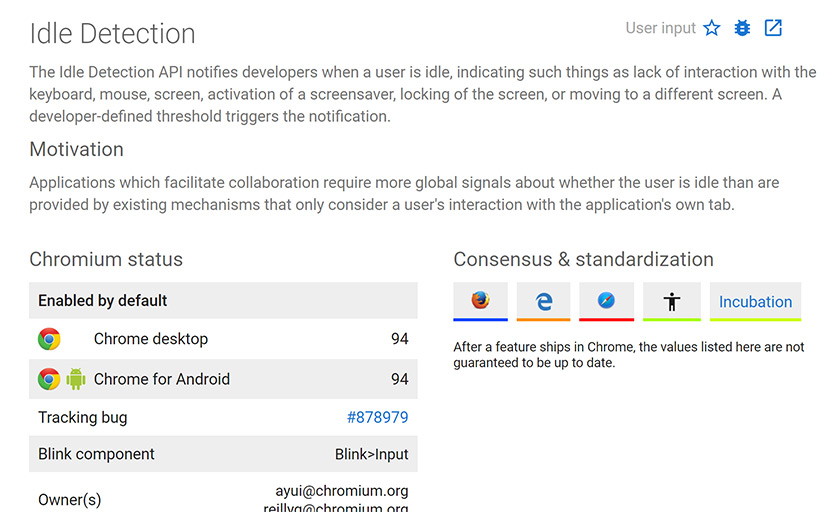
Google Chrome is the world's most popular browser. And things get speedier this time.
Chrome 94 has been released. And among others, it marks the first time that Google is updating the browser every four weeks, instead of the usual six. Google does this because it wants to push more features, security and bug fixes to users, faster with the shorter update release.
And since version 94 had a shorter development cycle as a result, enterprise customers should have access to an Extended Stable channel that updates every 8 weeks.
While shorter period between Chrome 94 and Chrome 93 does mean less added features, but that doesn't mean Chrome 94 lacks the punch.
For example, the most notable update is the 'Idle Detection' API, which is designed to detect user inactivity.
Google introduces this feature, despite concerns expressed by Mozilla and Apple.
The feature detects when a user is idle using signals, such as lack of use of mouse and keyboard, the screen locking, or the user switching away from the screen where the application is running. Using the API, Chrome 94 can then notify a web app that is running at the time, about this lack of activity.
The feature is designed for multi-user applications such as meetings, chat, and online games.
These events occur outside the browser, rather than being reserved for usage of the browser itself.
"Applications which facilitate collaboration require more global signals about whether the user is idle than are provided by existing mechanisms that only consider a user's interaction with the application's own tab," said the release notes.
While support for the API was expressed by developers from Slack and Google Chat, among others, rivals like Mozilla and Apple expressed their concerns.
This is because the feature can be harmful to users' privacy.
"I consider the Idle Detection API too tempting of an opportunity for surveillance capitalism motivated websites to invade an aspect of the user’s physical privacy, keep longterm records of physical user behaviors, discerning daily rhythms (e.g. lunchtime), and using that for proactive psychological manipulation (e.g. hunger, emotion, choice)," said head of Mozilla's web standards Tantek Çelik, on GitHub:
"In addition, such coarse patterns could be used by websites to surreptiously max-out local compute resources for proof-of-work computations, wasting electricity (cost to user, increasing carbon footprint) without the user’s consent or perhaps even awareness."

Google's Reilly Grant, who is among the people proposing for the Idle Detection API, asked the team at Apple's WebKit. In response, Apple's Ryosuke Niwa said that its "concerns are not limited to fingerprinting. There is an obvious privacy concern that this API lets a website observe whether a person is near the device or not. This could be used, for example, to start mining bitcoins when the user is not around or start deploying security exploits, etc.."
Grant argued, and said that the feature can be used to cryptocurrency miners that mine without users' consent. The API can benefit users by not showing notifications on inactive devices.
"[U]sers want to receive notifications on only the device they are currently using," Grant said.
But Niwa replied that "none of the use cases presented either here or elsewhere are compelling, and none of the privacy or security mitigations you've presented here and I found elsewhere are adequate."
Other notable feature on Chrome 94, include the removal of the AppCache feature. Described as a "security and stability liability", the feature has been called the "imposed a tax on all of Chrome's significant architectural efforts."
After that, there is the VirtualKeyboard API, which allows more control over its shape and an event fired when it covers page content.
There is also a more efficient low-level access to media encoders and decoders, and a new JavaScript Self Profiling API which enables developers to collect JavaScript performance profiles from end users.
"By providing an API to manipulate a sampling profiler, applications can gather rich execution data for aggregation and analysis with minimal overhead," wrote the documentations on the W3C Community Group.
At this time, the JavaScript Self Profiling API has received support from Microsoft, Elastic ad Dropbox, recorded on GitHub.
And lastly, Chrome 94 is also testing the WebGPU API, which can be useful for gamers using the browser.